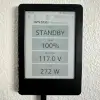
The Absurdity Of Paying For 5G
5G is coming. Refuse to pay extra for it.

In this covid era, 5G infrastructure is being built furiously by all 3 major US cell phone carriers. It promises increased data speeds and improved latency. But in real-world use, those are not likely to make your phone feel much faster. The biggest promise of 5G is more efficient spectrum use, leading to less cell tower congestion. But is carrier network management really something the end user should be paying an extra fee for?
In terms of fees, Verizon and AT&T are the only major US carriers who charge extra for mmWave 5G data access. On T-Mobile, the third major carrier, this type of 5G access is included at no added cost.
This comes after AT&T promised that they wouldn’t charge extra for it (but then went on to charge extra anyways in the form of gating 5G access behind their most expensive plans).[1]
In most cases, more customers using 5G is actually better for the health of a carrier’s network, because it offloads bandwidth from their saturated 4G LTE network, improving service for their other customers.
So why are Verizon and AT&T charging customers extra for 5G?
Carriers Benefit From People Using 5G
Let’s take Verizon as an example. Verizon’s 5G mmWave network has 40x the bandwidth capacity of their 4G LTE network, and their 4G network is congested enough that they have a separate “premium” data tier that acts as a fast-pass when their towers get overloaded:
The premium data is where things start to get tricky, because despite being called unlimited plans, the fine text at the bottom of Verizon’s infographic notes that “In times of congestion, your [unlimited 4G LTE] data may be temporarily slower than other traffic…
In other words, Verizon’s premium data is essentially a soft data cap, after which your data speeds could be throttled based on network congestion.
Verizon’s New ‘Unlimited’ Plans Are Just Screwing With Us Now - Gizmodo
For every customer Verizon gives access to 5G, their 4G network gets less congested. So, it’s not just the user on 5G who gets a better experience, but Verizon’s other users on 4G do too.
Conversely, if I choose to forgo 5G service and continue to only use 4G on my 5G-capable phone, it’s bad not just for me, but also for Verizon. It’s bad for me because I might connect to a congested 4G tower while a 5G tower right next to me goes unused. It’s bad for Verizon because I might hog the 4G tower’s limited resources instead of being offloaded to 5G. From a network standpoint, everyone loses.
I suspect that Verizon determined that they can make more money in the short term by charging extra for 5G airspace, even though it doesn’t make any sense in terms of network management.
So mark me down as one of the ones who’s not paying, I guess. Why should I pay Verizon an extra fee to help them ease congestion on their own network?
5G Isn’t Even That Good
On paper, mmWave 5G looks great. Whereas Verizon’s average 4G speed is 53 Mbps, their average 5G speed is 495 Mbps, a nearly tenfold increase. Early tests show Verizon’s 5G latency as less than 30ms - over 50% more responsive than 4G.
But in real-world use, what does this give you? Surprisingly, under the typical use case of web browsing, using apps and streaming video on a tower that is not overloaded, not a lot.
In a typical setting, the difference between web page load times on 4G vs 5G are negligible. The median web page weighs about 2MB nowadays, and average web server response times across the internet are 615ms. At 4G speeds (53 Mbps), the average web page’s data can be transferred in 300ms. In other words, your web browser spends 615ms or more just waiting for the server to respond[2], and only 300ms of real, actual download time. Since having 5G doesn’t make the web server on the other end any faster, a well-architected page might load in 600ms on 5G compared to 900ms on 4G, a difference only perceivable if you’re really paying attention for it.
As a side note, as 5G gains adoption web pages might actually become slower, because websites are expected to take the increased speeds as a green light to add more bloat to their pages.
I’m not the only one who thinks 5G is kind of lame. Haselton thinks so too:
With LTE, the killer app was, in my opinion, high-quality video chats. Before LTE, you needed a Wi-Fi connection for a high-quality video chat like FaceTime. Today, you can use 4G LTE for group video chats, for Snapchat, for TikTok, downloading big apps on the go, streaming Netflix and more. But you can do all of that without 5G, so there’s no really “must have” solution.
…
It’ll be years until we really see why we need 5G in our phones outside of getting faster downloads. There’s so much hype around these networks today, though. Consumers are bombarded by commercials advertising carrier 5G networks and the truth of it is this: You don’t need it yet.
Sure, with 5G you might be able to stream 4K video on your phone. But the difference between standard HD and 4K is barely noticeable even on a 65-inch TV, let alone a smartphone. To get any value out of 4K streaming, you would have to have a massive TV connected to your 5G plan[3]. Personally, I stream on my phone at 480p, and call me old-fashioned, but there’s never been a time while I was watching when I thought to myself “I wish I were streaming in higher resolution so I could see this video a bit clearer”. Maybe it’s because I don’t have a large phone.
Sure, with 5G you might be able to download an entire season of Netflix in under one minute. But who would ever do that, unless you were planning a trip somewhere without any internet or cell service? In that case, you might as well just download your Netflix show on your home wifi before you leave.
Sure, 5G gives you cred when you whip out your phone and show your friends your 1000 Mbps result in your speed test app. Neat, a high number. Very neat, for a few seconds. Maybe your friends will like you.
Sure, during large gatherings where 4G slows to a crawl, your phone will be able to hop onto 5G to escape congestion. But for planned events, Verizon already has a policy of just trucking out extra 4G cell towers anyways. For extra-large events like sporting events, it seems Verizon’s current strategy is to add as much 4G capacity as they can, then throw up their hands when the towers buckle and their 4G customers’ phones stop working anyways. God forbid they offload anyone to their empty 5G towers without charging them the premium fee. One can only hope that by the time Verizon’s 5G arrives more broadly to sports stadiums, they will revise their pay-for-5G policy.
The takeaway is that if there’s a perfectly good 5G tower right there with nobody using it, and I am one of the 10% of people who currently have a 5G-capable phone, shouldn’t Verizon be the one begging me to use 5G spectrum to help reduce their 4G tower load?
Conclusion
Someday Verizon’s 5G network will cover most of the US[4], and Verizon’s 4G will become a second-class network like their 3G network currently is. But until then, Verizon is still investing heavily in their 4G LTE network and there are no signs of them stopping. So Verizon’s 4G congestion is still their own damn fault, and consumers shouldn’t be paying an extra fee on top of normal service to help them deal with it.
Don’t get me wrong, there are plenty of ways 5G has the potential to improve communications, including “controlling manufacturing machines in real time, to facilitating car to car communication, to the dream of IoT, where everything talks to everything else at the speed of thought.” But the biggest improvement in terms of smartphones is for the carrier, not for the end user.
Right now, Verizon is double-dipping by charging you for 5G cell service that helps them more than it helps you. Don’t let them charge you extra to use it.
Footnotes
[1] AT&T reversed their position on their postpaid plans as of August 7th, and now include 5G with all plan tiers. However, 5G on prepaid is still gated behind their most expensive $75/mo plan.
[2] Or longer, if there are many separate connections and/or critical request chain issues.
[3] Home internet is one of the places 5G does really shine over 4G, as home internet users are likely to do much more bandwidth-intensive tasks such as having multiple users streaming hours of video at TV-resolution, working from home, backing up their computers, and downloading video games and software updates.
[4] A nationwide rollout would include not just the mmWave 5G discussed in this article, but mid and low-band 5G as well.
Photo by Troy Squillaci from Pexels
More Articles Tagged #tech
-

Kindle Display for Eaton UPS (via NUT)
19 April 2024 tech personal tutorial -

The Block Size Debate: 5 Years Later
27 August 2020 cryptocurrency tech -
Why Is It Called “Punycode”?
18 July 2020 tech
